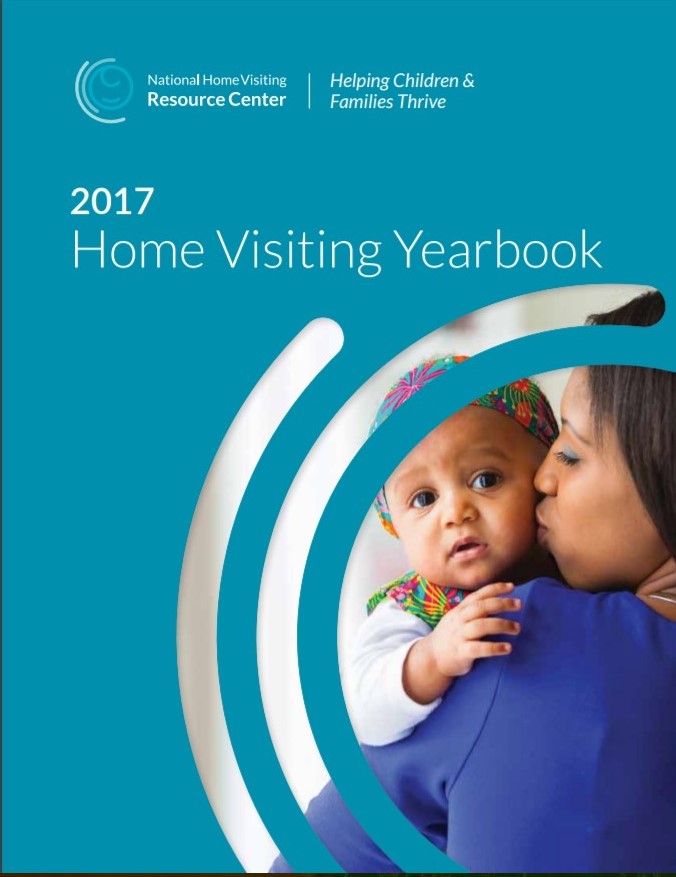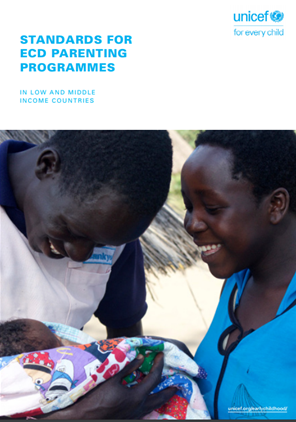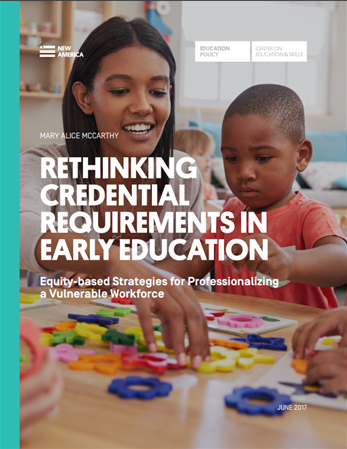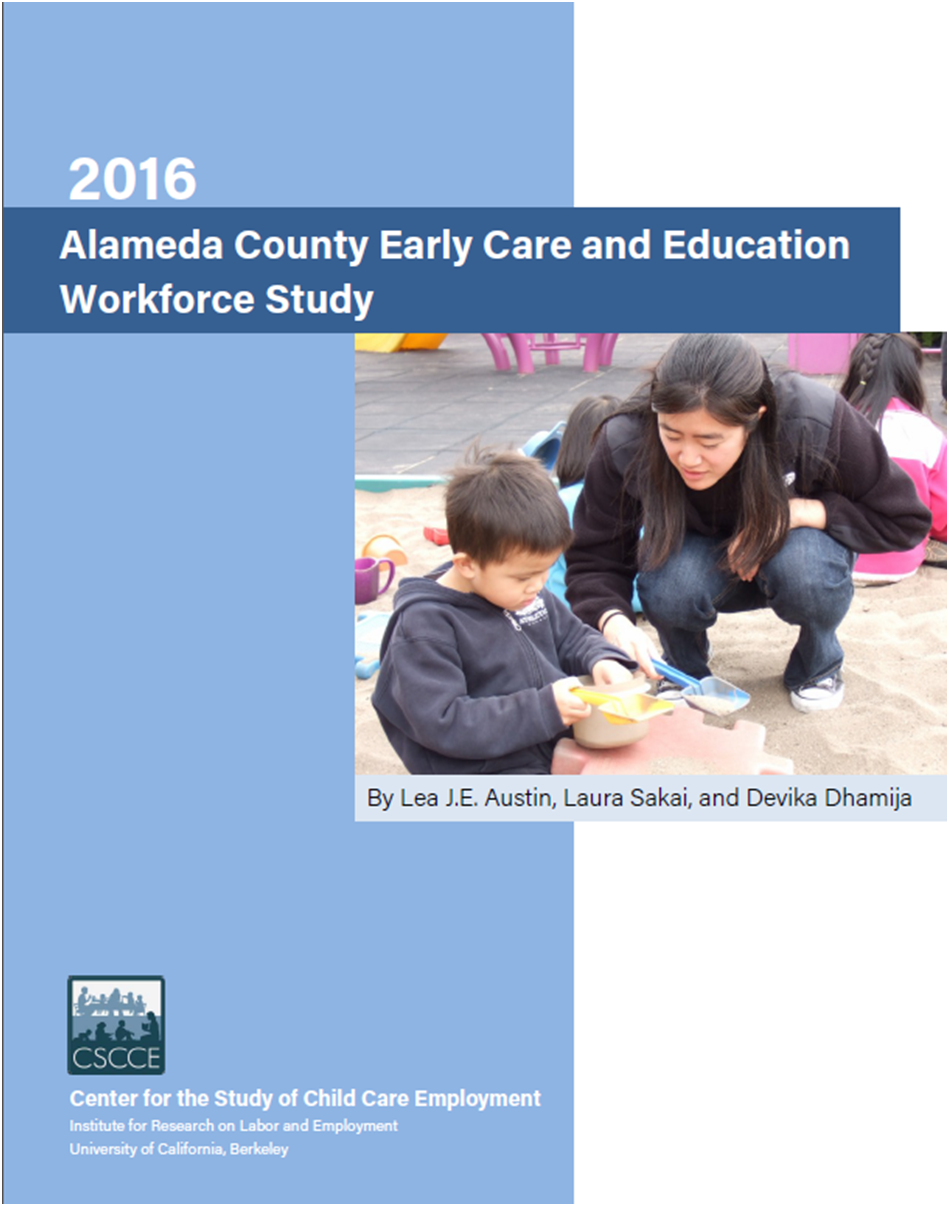Recognition of the profession
Summary:
Quality is key in Early Childhood Education in Australia highlights several key policy priorities for limiting quality across the Early Childhood Education and Care (ECEC) system. These priorities address gaps in access by focusing on:
- Pre-service teacher education, especially for Early Childhood Teachers (ECTs) and Diploma-qualified staff
- Pathways to grow pedagogical leaders
- Ongoing embedded and evidence -informed professional learning
- The use of data to track children's developmental, and design appropriate, personalized learning opportunities
This report also takes a look at the many elements of quality in ECEC and their importance.
Summary:
2017 Home Visiting Yearbook is one of the first publications from the National Home Visiting Resource Center. It was developed with the recognition that, as many communities have implemented home visiting models aimed at improving outcomes for children and families, there has not been a comprehensive overview of how home visiting is across the country. This resource aims to inform readers as they make decisions in policy and practice. The following critical questions are addressed:
Where do home visiting programs operate?
How many families and children are being served by home visiting, and how many more could benefit?
Who develops and administers home visiting?
Who funds home visiting?
This first edition presents the most complete data available on home visiting in the United States.
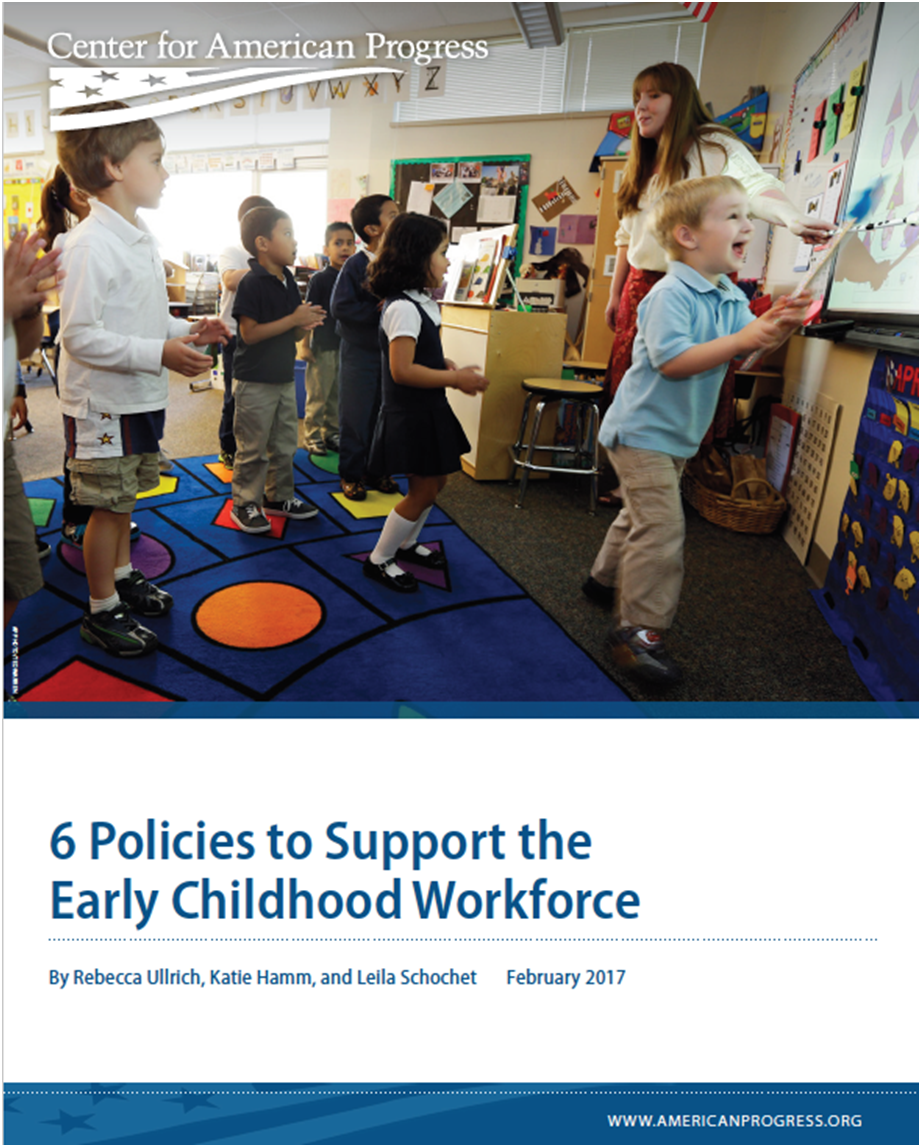
Summary:
6 Policies to Support the Early Childhood Workforce shares six policies that the federal government should include as part of significant federal financing reform for early care and education. The following policies will be implemented in partnership with communities:
- Develop and maintain a comprehensive professional development system with stable funding and measures for quality assurance.
- Develop or revise statewide career pathways that provide a road map for early childhood professionals to advance in their careers through increasing levels of education, experience, demonstrated competencies, and compensation.
- Make progress toward compensation and benefit standards at parity with kindergarten teachers.
- Promote data-driven policies and programs for the workforce with a statewide workforce registry.
- Bolster scholarship programs for early educators.
- Reward degree completion with wage supplements or tax credits.
These coordinated, integrated policies aim to promote a diverse early childhood workforce that is skilled, supported, and adequately compensated.
Summary:
Standards for ECD Parenting Programmes takes a deeper looking into the interventions or services which aim to support parenting interactions, behaviors, knowledge, beliefs, attitudes, and practices. The document guides practitioners through a set of standards for parenting programs. Nine standards are presented including:
- Supporting nurturing care because it contributes to holistic child development;
- Build on a theory of change that leads to the desired results;
- Tailor content to the child's developmental stage;
- Serve vulnerable children and their families;
- Involve all parents and key caregivers engaged in the function of parenting;
- Adapt to context and culture and build upon positive parenting practices;
- Engage trained workforce and service providers;
- Reflect continuous improvements through systematic monitoring and evaluation.
This resource is particularly targeted to low and middle income count ires.
Summary:
The relationship between teacher qualification and the quality of early childhood care and learning environment attempts to synthesize the empirical evidence on the relationship of teacher qualifications on the quality of early childhood learning environments. The study aims to answer one question:Is there a relationship between the level and type of education of the lead teacher, and the quality of the early childhood learning environment, as measured by the Early Childhood Environment Rating Scale, the Infant Toddler Environment Rating Scale and their revised versions?The authors review 48 studies with 82 independent samples from 1980 to 2014, examining the relationship between teacher qualification and the quality of ECEC environment. The results draw upon information from quantitative research data from a number of countries, showing that higher qualifications of teachers are significantly correlated with higher quality ECEC.
Summary:
Through Rethinking Credential Requirements in Early Education, New America takes a look into a recent policy change in the District of Columbia, which will require all lead teachers in licensed early childhood centers to hold an associate degree.Emphasizing the importance of ensuring young children have access to competent early educators, the report discusses several options for credentialing this workforce. Discussions of credentialing through a bachelor’s degree, as well as apprenticeship are included in the report.
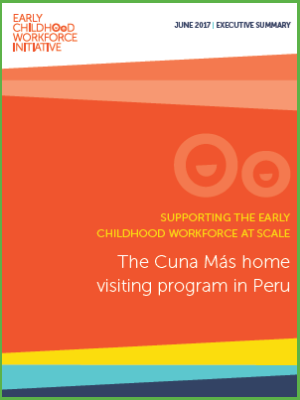
Summary:
The Early Childhood Workforce Initiative Country Study Series examines ways to strengthen and scale up a quality workforce. The first of these studies, Supporting the early childhood workforce at scale: The Cuna Más home visiting program in Peru, focuses on Cuna Más, a large-scale ECD program in Peru.
As one of few home visiting programs operating – and having been evaluated – at scale in low- and middle-income countries, Cuna Más holds valuable workforce lessons that may resonate more broadly with ECD programs and policymakers seeking to reach young children and families around the world:
-
Supervision in the field is critical for the home visiting workforce, particularly in rural contexts where many workers have limited training or experience and work independently much of the time.
-
In addition to delivering important content, educational materials are critical for empowering community home visitors who may not have the training or experience to otherwise provide guidance to young children and families.
-
It is important to identify and address workers’ travel-related barriers, especially in rural or remote areas
-
Career ladders and pay scales can reward both professionals and volunteers for their dedication, retain and leverage the experience of high-performing individuals, and encourage strong candidates to see working in ECD as a viable career path, rather than temporary employment.
Home visiting is often used to reach vulnerable young children as well as their caregivers. Trained individuals regularly visit a caregiver and child to improve parenting behaviors, the home environment, and impact child outcomes. The Cuna Más home visiting service enjoys relatively high coverage and early results are promising: a recent impact evaluation by the Inter-American Development Bank (IDB) found large effects on children’s cognitive and language development. However, operating at scale presents challenges to quality and sustainability.
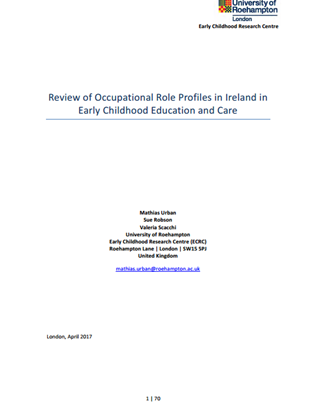
Summary:
Review of Occupational Role Profiles in Ireland in Early Childhood Education and Care presents a profile for the early childhood profession in Ireland.
The aim is to develop the Irish early childhood care and education sector into a genuine Competent System. A central requirement for achieving this goal is a shared orientation for all practitioners working with children from birth to eight years, regardless of occupational status, job title and level of formal qualification.
The concept of Competent Systems in early childhood has been developed by the CoRe project – an international study that investigated Competence Requirements in Early Childhood Education and Care on behalf of the European Commission (Urban, Vandenbroeck, Van Laere, Lazzari, & Peeters, 2011). Central to a competent system is that shared orientations are not only required of practitioners ‘on the ground’ but of all professionals and institutions that together constitute the early childhood system: early childhood settings, training and professional preparation, research, regulation and governance, inspection and evaluation.
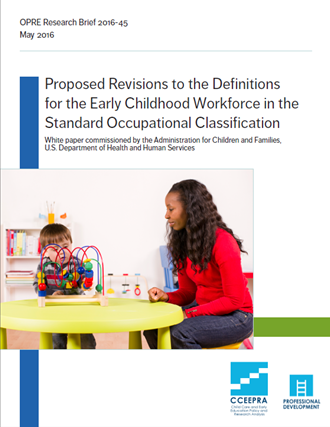
Summary:
Proposed Revisions to the Definitions for the Early Childhood Workforce in the Standard Occupational Classification proposes changes to the titles, definitions, and placement for the detailed occupations involving the early childhood care and education workforce in the Standard Occupational Classification.
This paper does the following:
- summarizes the key principles and coding guidelines from the 2010 SOC that must be taken into account in proposing revisions to the SOC definitions for the ECCE workforce;
- presents the definitions for the current detailed occupational categories in the SOC pertaining to the ECCE workforce;
- summarizes the problems with the current categorization and definitions as identified by the NAS Committee, and further issues that the Workgroup has identified when considering how the current definitions align with the principles and coding guidelines for the SOC;
- proposes a revised set of categories and definitions, indicating how they address the problems with the current occupational categories and definitions while adhering to the current principles and coding guidelines for the SOC;
- indicates how the revised categories and definitions could be used in conjunction with data on employment by industry to identify key subgroups of the ECCE workforce that are of high priority to federal agencies and other public and private users of the data;
- discusses the important priority of time series continuity (noting the proposed addition of a new Classification Principle focusing on this priority in the May 22nd, 2014 Federal Register Notice), and the potential for conducting time series analyses if the new occupational categories and definitions are adopted;
- discusses the differing contributions of recurrent data collection on the ECCE workforce through the
- federal statistical system and such one-time or periodic efforts as the National Survey of Early Care and Education (NSECE); and finally,
- acknowledges key limitations that cannot be addressed through proposing changes to the SOC categories and definitions, because of the nature of federal data collection on occupations, as well as the need for parallel steps to be taken to review definitions for the workforce working with school-age children in out-of-school-time care.
Proposed Revisions to the Definitions for the Early Childhood Workforce in the Standard Occupational Classification was commissioned by the Administration for Children and Families, U.S. Department of Health and Human Services and submitted by the Workgroup on the Early Childhood Workforce and Professional Development.
Summary:
2016 Alameda County Early Care and Education Workforce Study aims to inform policy, planning and advocacy efforts in California, specifically Alameda County. The study collected countrywide information about teaching staff employed by center-based ECE programs with the goal of identifying the demographic, education and employment characteristics of Alameda Country’s center-based workforce. The data is intended to inform policy makers and to serve as a resource for stakeholders interested in information on the state of the early childhood workforce to inform policymaking, planning and the investment of resources.



